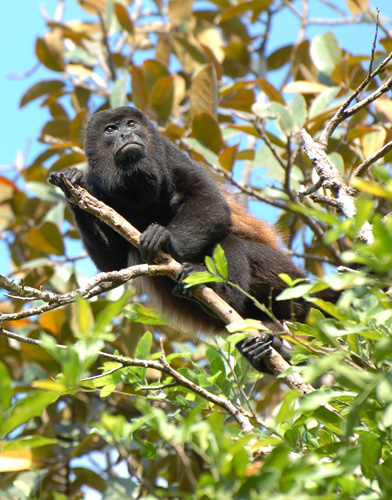Facts About Mantled Howler Monkey
The mantled howler, also known as the golden-mantled howling monkey, is a captivating species of New World monkey found in Central and South America. As one of the largest monkeys in Central America, it is renowned for its predominantly leaf-based diet and unique adaptations, such as its enlarged hyoid bones that enable its signature howls. These monkeys live in groups with a dominant alpha male and possess a complex social structure. They are vital to rainforest ecology due to their role in seed dispersal and germination.
In terms of classification, the mantled howler belongs to the New World monkey family Atelidae, specifically the subfamily Alouattinae, and is part of the genus Alouatta. There are three recognized subspecies. These monkeys are primarily black with yellow or golden-brown guard hairs on their flanks. They have evolved with high shearing molars and prehensile tails to aid their leaf-heavy diet.
In terms of behavior, mantled howlers are social animals but do not engage extensively in grooming each other. They communicate through loud howls and other vocalizations. While their diet mainly consists of leaves, they also consume fruits and flowers. Their mating system is polygamous, featuring intricate reproductive behaviors. These monkeys are diurnal (active during the day), arboreal (tree-dwelling), and tend to be relatively inactive, conserving energy due to their low-calorie diet.
Mantled howlers are found across several countries in Central and South America, inhabiting various types of forests. Unfortunately, their habitats are increasingly fragmented, putting them at risk. However, they exhibit some ability to adapt to changing environments. Ongoing conservation efforts aim to protect these monkeys, as they play a crucial role in maintaining the health of their ecosystems by dispersing and germinating seeds.

 El Salvador
El Salvador